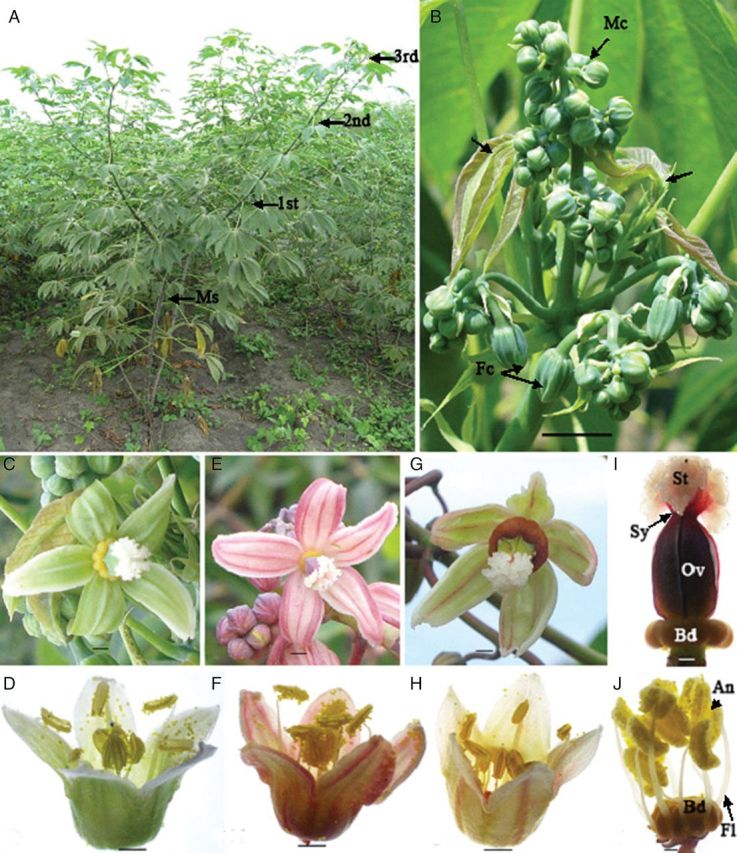Fig. 1.

Morphological aspects of M. esculenta inflorescence. (A) Branching/ramification of SM 1219-9, which is typical of branching type cassava genotypes. Note the branching pattern of main stem (Ms), 1st, 2nd and 3rd. (B) Flowering at the terminating branch. Note that the development of the next branching level (arrows) simultaneously at the flowering end and different racemes bearing female (Fc) and male (Mc) cyathia (scale bar = 17.5 mm). (C) Female cyathium (a single female flower reduced to one gynoecium consisted of five nectar glands covered by five petal-like bracts) of SM 1219-9 (scale bar = 1.25 mm). (D) Male cyathium (inflorescence composed of 10 male flowers reduced to 10 stamens covered by five petal-like bracts) of SM 1219-9 (scale bar = 1 mm). (E) Female cyathium of HMC 1 (scale bar = 1.25 mm). (F) Male cyathium of HMC 1 (scale bar = 2 mm). (G) Female cyathium of TMS 60444 (scale bar = 1.35 mm). (H) Male cyathium of TMS 60444 (scale bar = 2 mm). (I) Gynoecium. Note the ovary (Ov) with short style (Sy) and three-lobed stigma (St) (scale bar = 1 mm). (J) Androecium. Note the filaments (Fl) with dosifixed anthers (An) arise from the basal disk (Bd) (scale bar = 1 mm).
